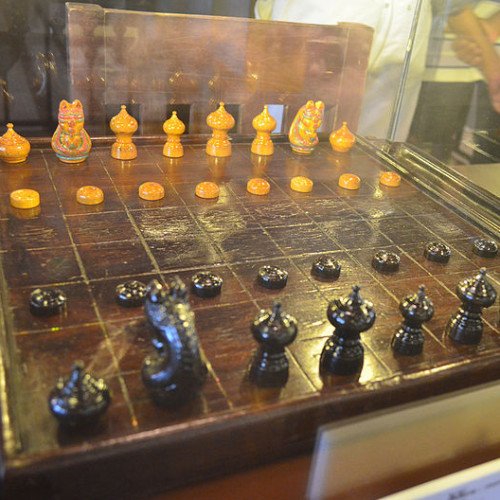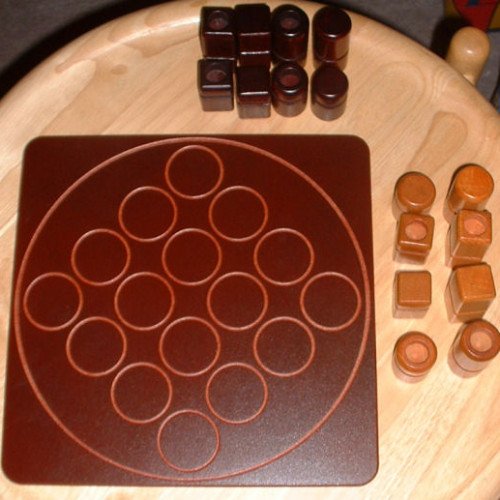MAKRUK VS QUARTO

MAKRUK
Makruk or Thai chess, is a board game that is descended from the 6th-century Indian game of chaturanga or a close relative thereof, and is therefore related to chess. It is classified as a chess variant. The word "ruk" (Thai: รุก) in Thai is thought to derive from "rukh" which means "chariot" in the Persian language (and is also the common origin of the name for a rook in western chess). The Persian traders came to the Ayutthaya kingdom around the 14th century to spread their culture and to trade with the Thai kingdom. It is therefore possible that the Siamese Makruk, in its present form, was directly derived from the Persian game of Shatranj via the cultural exchange between the two people in this period. This is because the movement of Makruk Thai's queen, or the "seed" (Thai: เม็ด), is essentially the same as the ferz in Shatranj. The disadvantaged player announces the counting of his fleeing moves, starting from the number of pieces left on the board, including both kings. The winning player has to checkmate his opponent's king before the maximum number is announced, otherwise the game is declared a draw. During this process, the count may restart if the counting player would like to stop and start counting again. For example, if White has two rooks and a knight against a lone black king, he has three moves to checkmate his opponent (the given value of 8 minus the total number of pieces, 5). If Black captures a white rook, the count does not automatically restart, unless Black is willing to do so, at his own disadvantage. However, many players do not understand this and restart the counting while fleeing with the king.
Statistics for this Xoptio

QUARTO
Quarto is a board game for two players invented by Swiss mathematician Blaise Müller. It is published and copyrighted by Gigamic. The game is played on a 4×4 board. There are 16 unique pieces to play with, each of which is either: tall or short; red or blue (or a different pair of colors, e.g. light- or dark-stained wood); square or circular; and hollow-top or solid-top. Players take turns choosing a piece which the other player must then place on the board. A player wins by placing a piece on the board which forms a horizontal, vertical, or diagonal row of four pieces, all of which have a common attribute (all short, all circular, etc.). A variant rule included in many editions gives a second way to win by placing four matching pieces in a 2×2 square. Quarto is distinctive in that there is only one set of common pieces, rather than a set for one player and a different set for the other. It is therefore an impartial game.